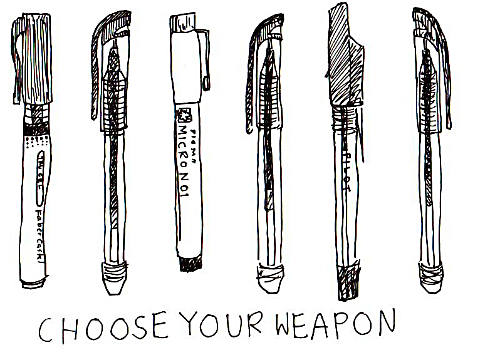Chris Baty's Blog, page 181
October 4, 2014
We Need Diverse Books: Why Diversity Matters for Everyone
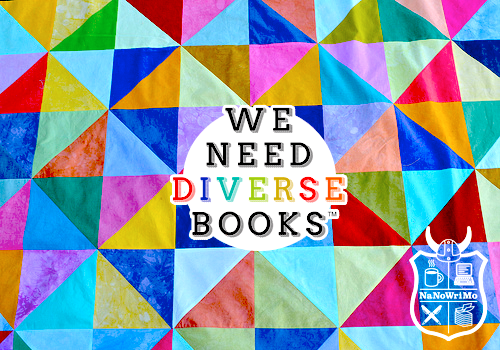
Throughout October, we’ll be partnering with We Need Diverse Books to bring you a series of blog posts full of helpful advice, tips, and suggestions for writing diversity convincingly and respectfully in your fiction—from people who know what they’re talking about. Today, Marieke Nijkamp shares why diversity matters for everyone:
Why does diversity matter? The answer to that question should be simple and straightforward: because everyone deserves to be a hero. Because everyone deserves to be seen. Because representation matters.
Junot Díaz famously said: “If you want to make a human being into a monster, deny them, at the cultural level, any reflection of themselves.”
Yet this is exactly what the vast majority of our stories does, whether intentionally or not. In a time when—in the US—more than half of the children born will be non-white, less than ten percent of books published are about characters of color or written by people of color. And while one out of five teens will deal with a serious debilitating mental illness, perhaps only one out of twenty books even recognizes mental illnesses exist…
For most of us, whether we’re disabled, LGBTQ, people of color, part of a religious minority, indigenous peoples, it is achingly hard—often impossibly so—to find a story about us. Not just about us, but stories that reflect the world we live in. Stories where we’re seen.
In fact, most readers would be forgiven to think that in the future there are no limps and autistic people never ran a spaceship. That only the white hero can slay the dragon. And that LGBTQ characters have issues, not happy endings.
But when our stories don’t include characters readers can relate to by shared experience, shared background, shared ability—in fact, when our stories continuously erase those characters—we teach readers that their stories don’t matter. We teach them that their voices don’t matter. We teach them that they don’t matter.
We rob our readers and ourselves of the chance to discover reflections in stories. We choose to keep them invisible and alone, when it’s those exact stories that can tell them they are not alone in the world.
Representation matters for readers without marginalized experiences, too. To introduce them to other perspectives and other world views. To teach readers that the world is far richer than their experiences alone. Because there is no one way to be different, and this world is not inhabited by stereotypes and tropes, but by real, multidimensional people.
But above all, diverse stories allow all of us to listen. They are not merely mirrors, but windows, too. Through those windows we see that we all bring unique experiences to the table. By recognizing that, we may learn to better understand and accept each other.
As writers—during NaNoWriMo and with every single story we write—we can change that. We have a whole spectrum of experiences with which to imbue our stories, without erasing identities, without perpetuating tropes and stereotypes. We can diversify to ensure our stories are both mirrors to all our selves, and windows to a wider world around us.

Marieke Nijkamp is a storyteller, dreamer, globe-trotter, and proud-to-be geek. As founder of DiversifYA and VP of We Need Diverse Books™, she is passionate about all things diversity. In the midnight hours, Marieke writes young adult stories, as well as the occasional middle grade adventure. She wants to grow up to be a time traveler.

We Need Diverse Books (WNDB) is a grassroots nonprofit organization created to address the lack of diverse, non-majority narratives in children’s literature. WNDB is committed to the ideal that embracing diversity will lead to acceptance, empathy, and ultimately equality. In October, the group will be launching its inaugural Indiegogo campaign to support its future initiatives, including a Diversity in the Classroom program, diverse author grants and awards, and the first ever Diversity Festival in 2016. Volunteer & sign up for its mailing list at diversebooks.org, or follow WNDB on Twitter, Tumblr, Facebook, and Instagram!
October 3, 2014
NaNo Prep: The Truth of What It Takes to Be a Writer
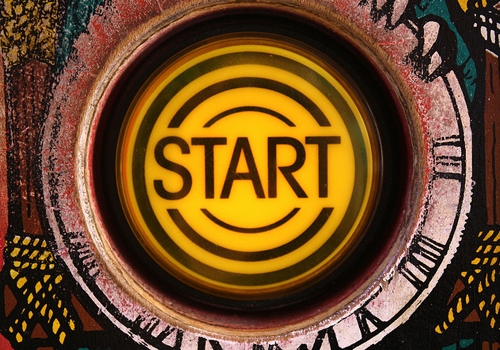
NaNo Prep season is here, and we’re asking friends of NaNo HQ to help you get ready to tell your story this November. Today, author and NaNo Writers Board member Hugh Howey reveals the truth behind the lie of what it takes to be a novelist:
To paraphrase John Grisham: “Writing a novel is not as easy as some readers think. Nor is it as difficult as many writers make it out to be.” Mr. Grisham proceeded to describe his daily writing routine: He spends two to three hours every morning writing, and most of the rest of his time is spent fishing. This is enough to produce one riveting and bestselling novel in just a few months.
His admission came as a revelation to those in the audience who had never written a novel but dearly wanted to. Here was one of the greats demystifying the process. It was as simple as a few hours every day, and the result was a completed novel in less than a year. How was this possible? I had spent the last twenty years of my life dreaming of writing a novel, with dozens of fits and starts, and all I had were scattered chapters to show for it…
The interview with Mr. Grisham took place at the 2009 Virginia Festival of the Book. I was in attendance, covering and critiquing that which I could not do. In another panel, an aspiring writer asked four bestselling authors for advice on completing her first novel. Caroline Todd’s answer hit me as hard as Mr. Grisham’s admission had. “You stop thinking about writing,” Mrs. Todd said. “You stop dreaming about writing. You stop talking about being a writer, and you sit down and write.”
Returning home from this book festival, I sat in front of my computer and knocked out a rough draft for my first novel. It took me two weeks to write a 100,000 word manuscript. And it wasn’t bad. I sent it around to friends and family first, and then I queried agents and publishers. Two small presses made offers within weeks of submitting it. I was now a published author. Twenty years of procrastinating and two weeks of writing. But here’s the thing: It’s the two weeks that I’m ashamed of.
The twenty years of futility are worn like a badge of honor. The two weeks of writing for ten to twelve hours a day are a dirty secret to keep hidden. Because art takes suffering. Nothing of value can be accomplished in so short a time. Dues are paid in decades. And this is the lie that Mr. Grisham and Mrs. Todd so eloquently destroyed. The truth is this: Writing a novel is about daily sustained effort. Two hours a day isn’t so bad. It’s the not missing a day that gets you.
The real value of this lesson was learned later that same year, as I participated in my first National Novel Writing Month, or NaNoWriMo. Every year, hundreds of thousands of writers challenge themselves to write a 50,000 word novel in the month of November. Doing so requires 1,667 words per day. That’s not a difficult target to hit. The trick is hitting it every single day.
If writers are great at one thing, it’s not writing. This is the only class of professionals who have a sympathy-inducing excuse for doing nothing, which we call Writer’s Block. It means we can take guilt-free naps. It also means we can put off writing until what should take five months takes five years. And nobody—not the least of which is ourselves—can hold us responsible.
The genius of NaNoWriMo is that it holds us responsible. It does this with daily writing targets and progress graphs, but more importantly by providing the one thing many writers suffer without, and that’s community. On our NaNoWriMo homepage, we see our writing buddies’ progress meters, which reminds us to get cracking. We cheer one another on in the forums. We receive emails from accomplished writers with encouragement and advice. And we meet with other participants in our physical community to write in coffee shops and libraries.
Writing is neither as hard as we make it out to be nor as simple as we’d like it to be. It takes sustained daily effort, and the sustained bit is tricky. This past year was to be my fifth NaNoWriMo. I wrote a novel in each of my previous four Novembers. All of those books have been published and have sold over two million copies between them. But this time it wasn’t going to happen. It couldn’t happen. I was going to be out of the country the entire month of November on book tour. Maybe next year.
“Maybe next year” is how I compiled twenty years of futility. “Maybe I can find the time to write today” is how I made a career as an author. So rather than take an easy excuse, I found two or three hours every single day, and across eight countries and during a brutal schedule, I wrote another novel that I’m proud of.
This pride is the greatest lesson I’ve learned from NaNoWriMo. It’s more important than even the lessons of good daily writing habits and the willpower to overcome procrastination. For the longest time, I thought there was honor in all the years I spent dreaming of writing while doing very little of it. And for years I wouldn’t admit to anyone that I wrote my debut novel in two weeks. Pride in doing nothing. Shame in accomplishment. It should be the other way around.
To participate in NaNoWriMo is to learn firsthand the truth of Mr. Grisham’s and Mrs. Todd’s advice: Writing isn’t as hard as we make it out to be. You simply have to commit to doing it. And any month—maybe even this November—is a good time to start.
Hugh Howey is the New York Times bestselling author of Wool and the Molly Fyde series. He’s participated in NaNoWriMo several times and wrote 80,000 of Wool‘s 160,000 words during NaNoWriMo. He spent eight years working as a yacht captain before settling down and chasing his dream of becoming a writer. He now lives in Jupiter, Florida with his wife Amber and their dog Bella.
Top photo by Flickr user faceless ekone.
October 2, 2014
NaNo Prep: Prepare for a Creative Revolution
Art above by buckyandlouissa. NaNo Prep season is here, and we’re asking friends of NaNo HQ to help you get ready to tell your story this November. Today, author e.E. Charlton-Trujillo welcomes you to a creative revolution:
One of the greatest challenges that faces us as a community of writers is developing a willingness to take chances… to take risks in how we write and who we write. As Matt de la Peña says, “You have to take risks. Something amazing can only happen, if you’re a gambler.”
So let’s be amazing. Right now. In this moment. How do you start? First:
Learn the Rules
So you can smash them later! But first, you must get a grip on the techniques of writing, so you understand how form works. Read other writers. Know that you will become a stronger storyteller by experiencing how other writers have approached the word. Never discount the
value of what another writer’s success—and sometimes failure—will teach you.
Whether you Kindle or page flip Jane Austen, Meg Medina, Flannery O’Connor, or Jason Reynolds, savor the flavor of how great stories have been written. You will be ignited. Learn the core rules of writing and you will have the freedom to know what has been done and what hasn’t. And then…
Experiment With the Page
The moment you put pen to page, you are making art with line to letter and letter to word and so it goes. Monster by Walter Dean Myers brilliantly shows how melding various writing formats, such as screenwriting, with the traditional novel can bend a story back and bring it into forward motion.
Crank by Ellen Hopkins re-energized the power and potential of verse as a novel. Don’t be afraid to make that page a canvas. Story as ever-evolving as life.
Write IN
BOLD print or italics or
odd spaces
b e t w e e n
moments.
Git ya’ characters on the quick, where they ain’t ‘fraid to say
“Hey …
You off it from the jump.”
But only make these choices
if they are the truth
of your
story.
Write Characters Who Represent
Just like you might take risks with bending format, be willing to write authentic and diverse characters. I will not accept that you must write only within your ethnicity or race. Film director Ang Lee redefined his comfort zone with a diverse storyscape.
Your characters are real people. They are not stereotypes. Their narratives are as rich as your own. Don’t be afraid to be a gambler. Stretch beyond your comfort zone. Write some truth in that fiction.
The Challenge
Write upside down or backwards, but tell your story. The story that you must write. Never let anyone say you can’t write in a way that isn’t conventional.
Someone once shamed me, “You can’t write like that. That’s not writing for kids.”
I just sold that book. Yes, you can write like that!
Sculpt characters as diverse as the world actually is. Writing is for all kinds of readers… all. Take risks, have fun and be brave because you’re amazing. Welcome to the creative revolution!
e.E. Charlton-Trujillo is an award-winning filmmaker and author of three books: Prizefighter en Mi Casa, Feels Like Home, and Fat Angie. In 2013, she traveled America on an unconventional book tour to empower at-risk youth through writing workshops. The feature film At-Risk Summer documents this experience and will have limited free screenings October 2014 - November 2014. Charlton-Trujillo is the recipient of the ALA Stonewall Award 2014.
Top art by Tumblr user buckyandlouissa.
October 1, 2014
In Case of Inspiration Emergency: Re-imagine a Familiar Story
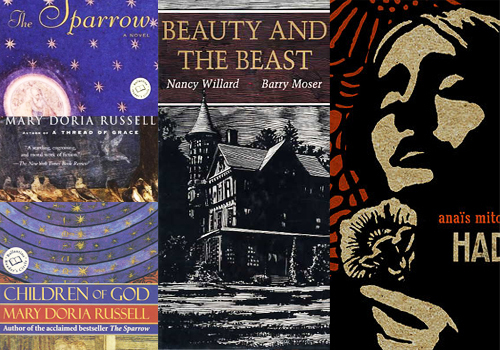
Whether you’re a planner or not, there’s one thing every writer will need as they prepare for NaNoWriMo: inspiration. We’ve challenged some of our favorite authors and the NaNo staff to inspire you by sharing what’s inspired them… and challenging you to prepare a specific jumpstart for that inevitable idea drought:
The Inspirer: Kira Del Mar, YWP Educator and NaNoWriMo Associate Board member.
The Inspiration Sources:
The Sparrow and Children of God by Mary Doria Russell
Beauty and the Beast by Nancy Willard, illustrated by Barry Moser
Hadestown by Anaïs Mitchell
The Jumpstart: Re-imagine a familiar story from a new perspective or in an unfamiliar setting.
Why This Will Inspire You: Whenever I set out to plan and plot my next NaNo novel, I quickly find myself overcome by the Inner Editor’s evil twin: the Inner Novelty Checker. That’s been done before, it whines, in response to every single potential plot I throw its way.
This year, however, I’ve made a vow to look my Inner Novelty Checker right in the eye and tell him, “So what?” Because I’ve realized that I genuinely admire authors, artists, and musicians whose work has the power to make me sit up, take note, and think new thoughts on subjects that I previously considered well-worn.
These works would never have come into being had their makers not faced down their INCs and said no to the tyranny of the new.
The Sparrow and Children of God by Mary Doria Russell
There are zillions of first contact stories out there, but Mary Doria Russell’s debut sci-fi novel, The Sparrow, and its sequel, Children of God (tagline: Jesuits in space!), are something special, particularly in the way they complement each other.
At the end of the first, you’ve worked your way from ignorance to enlightenment alongside the novel’s central character—or so you think until you read the second novel, which entirely overhauls your understanding of the world, the people, and the events with which you had seemingly become so familiar.
Beauty and the Beast by Nancy Willard, illustrated by Barry Moser
I was drawn to this version of the well-known fairy tale by Moser’s evocative illustrations, but stayed for Willard’s imaginative resetting. Willard’s Gilded Age Beauty leaves her opulent 5th Avenue townhouse for a rustic, upstate cottage and spends some time learning to live off the land before taking up her requisite residence at the Beast’s Victorian estate.
Every page and picture is both recognizable and new, comfortable and thought-provoking. It adds another layer atop the old story and still manages to stand alone.
Hadestown by Anaïs Mitchell
The album Hadestown, by Anaïs Mitchell pulls off the same feat, retelling the Orpheus and Eurydice myth in a post-apocalyptic depression era that’s as far from a sunny Greek meadow as Mitchell’s headstrong, thoughtful Eurydice is from the glorified-set-dressing original.
Mitchell’s lyrics draw out new themes in an old tale, and well-known stock characters take on startling depth as they speak (or sing, rather) for themselves. (It also makes excellent noveling music—at least for those who don’t mind writing to lyrics—since its many moods and influences provide aural fuel for everything from dramatic duels to contemplative inner monologues.)
These stories lose none of their power to surprise and delight simply because they wear the wheel ruts a little deeper rather than traveling over pristine ground.
That’s why, this year, I’ll be giving my plotting muscles a break, following the road frequently taken, and putting all my focus on enjoying the scenery and the characters I encounter along the way. Care to come along?

Kira Del Mar teaches seventh grade English at Black Pine Circle School in Berkeley, CA, and she has been noveling alongside BPC’s many young Wrimos since 2010. She is daily delighted by the unique combination of intellectual ability and unabashed silliness found only in middle school students. Kira is also an oil portraitist, a printer’s assistant at Horwinski Printing Co. in Oakland, and an avid re-reader.
September 30, 2014
NaNo Prep: How to Write About What You Don't Know
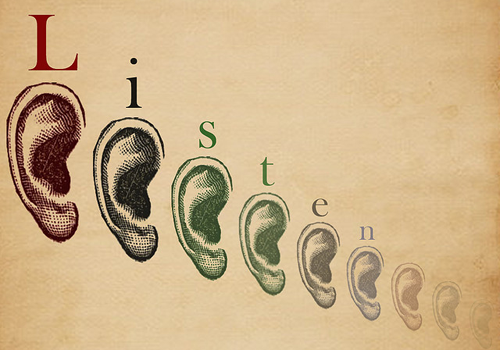
NaNo Prep season is here, and we’re asking the folks at NaNo HQ and our friends to help you get ready to tell your story this November. If you’re considering stretching out of your comfort zone to write about a culture or experience different from your own, author Crystal Chan has a few easy tips to figure out if you’re ready:
The old adage is, Write what you know. But what if you find yourself writing about what you don’t know—if you’re a female writer writing about a male protagonist, or a white writer developing a Vietnamese character, or an able-bodied writer crafting a story about someone who’s disabled?
If this is you, congratulations. You’re pushing your limits, and expanding your world. And take a deep breath, because a heavy dose of research—and humility—will be involved. You can’t just conjecture because you’ll do so using your own frame of reference. Writing about what you don’t know explicitly means that you can’t rely on your own experiences. You have to do so much research that this new material becomes what you know.
Here are some launching points for those who want to tackle this issue:
Find and listen to people who are your target population. Not just one person: one person does not and cannot represent the breadth of an entire population. Hear from multiple people—at least three—and get their experiences, their worldviews, their philosophies. (If when they offer you criticism, you feel defensive or upset, then you might not be ready to write from this perspective.)
Research. Do you know this group’s music? History? The words they use to self-identify? Food? Culture? Belief systems? Struggles? How they view their struggles? The different kinds of communities within this group? (Remember, no group is a monoculture.)
Do you know the stereotypes that mainstream culture places on these groups? You must find this out, and then honestly measure your work against this. Are you stereotyping?
I’m half Chinese and half white. The protagonist in my debut novel, Bird, is also mixed: she’s Jamaican, Mexican, and white. Her best friend is a transracial adoptee. Clearly, I could draw on my experiences but there are obvious differences, too. I had no idea what foods Jamaicans ate, or the spirituality of Mexicans or Jamaicans, or even what music they listened to. I’m not adopted. All of that mattered for the novel, and all of it—and more—matters if you’re going to make a character step off of the page.
I’m frequently asked, “Can authors write about characters who are of a different race?” It’s a good question: what you want to undertake is a big responsibility, and you want to know if you are truly ready for it.
Ask yourself: do you read about race and our systems of prejudice in this country? Are you willing to dig deep and analyze systemic racism—not just in our society but within themselves? Do you have intimate friends of different backgrounds with whom you talk about race on a regular basis?
If the answer is yes, then you’re ripe for doing the above research. If the answer is no, then you might not be ready yet. And that’s fine. Part of the path is knowing when you’re ready, and then part of it is having the wisdom and humility to realize when you’re not.
Don’t forget: readers are always drawn to the authentic voice, no matter the race of your characters. So be true to that authentic voice; work hard for it. You’ll be grateful you did… and so will your readers.
Crystal Chan grew up as a mixed-race kid in the middle of the Wisconsin cornfields and has been trying to find her place in the world ever since. Over time, she found that her heart lies in public speaking, performing, and ultimately, writing. In Chicago, where Crystal now lives, you will find her biking and talking to her pet turtle. Her debut middle-grade novel, Bird , is published by Atheneum Books for Young Readers.
Top photo by Flickr user ky_olsen.
September 29, 2014
No Plot? No Problem! — Should You Start a Novel From Scratch This November?

NaNoWriMo season is officially here! How can you prepare for a successful November? By planning your novel, storing up inspiration, or finding a writing partner-in-crime. This week, Chris Baty shares an excerpt from the new-and-improved 2014 edition of No Plot? No Problem! (Check it out in our store, too!)
One of National Novel Writing Month’s rules is that you must start your novel from scratch on Day One of the event. You can bring as many outlines and notes and character maps as you like, but writing any of the book’s actual prose in advance is forbidden. This rule is enforced by legions of invisible guilt-monkeys, which are unleashed every year against those who break the rules.
While this costs NaNoWriMo a pretty penny in guilt-monkeys, it also keeps things fresh and prevents people from sabotaging their productivity by being overly invested in the outcome of their book.
That said, a growing number of NaNoWriMo veterans have been using the month to add 50,000 more words to an existing manuscript. We call them Rebels, and their ranks include many of our published participants…
If you are going to use your thirty-day deadline to flesh out an existing manuscript, know that a state of exuberant imperfection is harder to attain when you’re building a new wing onto an old house. The writing will be slower, and the joyful epiphanies fewer. If this is your first month of literary abandon, I strongly recommend you dive in with a new idea.
If you’re set on adding 50,000 words to an older story next month, though, here are some great tips from experienced Rebels on doing it with aplomb.
“Spend October (or whatever month comes before your chosen one) getting reacquainted with your novel. Try to think of it as a favorite TV series with a new season about to start. Build up some anticipation! When you begin writing, start a new text document, and use the old one only for reference. It will make getting an accurate word count easier, and will keep you from editing when you should be writing.”
— Paz Alonso, eight-time NaNoWriMo winner from Frankfurt am Main, Germany
“Keep a timeline of events, both about what you’ve written, and what you’re going to write.”
— Mandi Lynch, seven-time NaNoWriMo winner from Nashville, Tennessee
“Don’t worry about making sure the new writing matches the tone of the previous chapters. It all has to be edited eventually, and right now the important thing is just getting through the scenes.”
— Nicole Tuberty, six-time NaNoWriMo winner from St. Louis, Missouri.
 Chris Baty accidentally founded National Novel Writing Month in 1999, and now serves as a Board Member Emeritus for NaNoWriMo. He spends his days teaching classes at Stanford University’s Writer’s Studio, giving talks, helping companies with content strategy, and endlessly revising his own novels. His quest for the perfect cup of coffee is ongoing, and will likely kill him someday.
Chris Baty accidentally founded National Novel Writing Month in 1999, and now serves as a Board Member Emeritus for NaNoWriMo. He spends his days teaching classes at Stanford University’s Writer’s Studio, giving talks, helping companies with content strategy, and endlessly revising his own novels. His quest for the perfect cup of coffee is ongoing, and will likely kill him someday.
Top photos by Flickr user Mike Oliveri, and Chronicle Books.
September 26, 2014
In Case of Inspiration Emergency: Write an Author Manifesto
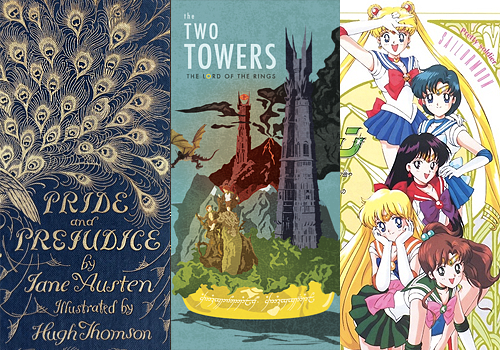
Whether you’re a planner or not, there’s one thing every writer will need as they prepare for NaNoWriMo: inspiration. We’ve challenged some of our favorite authors and the NaNo staff to inspire you by sharing what’s inspired them… and challenging you to prepare a specific jumpstart for that inevitable idea drought:
The Inspirer: Marissa Meyer, author of the Lunar Chronicles series
The Inspiration Sources:
The Lord of the Rings , by J. R. R. Tolkien
Pride and Prejudice , by Jane Austen
Sailor Moon
The Jumpstart: What do you love to read and write about? Write a 100-word Author Manifesto for the type of stories you’d like to be known for writing, whether that includes creating new universes, timeless human stories, or awesome girl superheroes.
Why This Will Inspire You: It’s impossible for us creative-types to go through life without being influenced by the art and storytelling we come across every day, but we don’t always recognize our major influencers until we take a moment to reflect.
This year, NaNoWriMo has asked us to do just that.
Here are three works from pop culture that I can now recognize for having had enormous impact on me over the years.
The Lord of the Rings by J.R.R. Tolkien
My uncle gave me The Hobbit and The Lord of the Rings when I was in 5th grade, and I can remember reading it during a family camping trip and being so annoyed when I was expected to do things like—go hiking. Or go swim in the river. Or roast marshmallows.
Although I’d read some fantasy before, LOTR were the first books I read in which the author created an entirely new universe. From the mountains to the languages to the orcs to an epic, complex history, everything came out of the author’s imagination. This was eye-opening to me as an aspiring writer, the idea that there was nothing in our real world that could limit me. I could make up my own planets, my own rules, my own everything.
Pride and Prejudice by Jane Austen
Elizabeth Bennet has all the hallmarks of a strong, empowered female character, yet this book was written 200 years before strong, empowered female characters were all the rage! While the rules have society may have changed with time, Austen’s works show us that some things simply don’t change all that much. We still want to be appreciated and respected for who we are on the inside, we still want happiness and love and stability in our lives, we still yearn for strong friendships and family bonds.
Trends will come and go, but a timeless story is one that continues to speak to us on a human level, no matter what era we live in.
Sailor Moon and Fanfiction
The biggest obsession from my teen years was the Japanese anime Sailor Moon, which impacted me on so many levels. Though I had always loved the idea of superheroes, this was the first show I remember in which the girls (girls my age, no less!) got to save the world, time and again. It also focused heavily on the importance of friendship, standing up for what’s right, and being true to yourself, all messages that teenage-me needed to hear.
On a more writer-y level, Sailor Moon introduced me to the awesome world of fanfiction and a community that would go on to motivate me to this day. Thanks to the Internet, even kids with the most unusual of interests can find a safe place to let their creativity shine. For me that safe place was Sailor Moon and I’ll always be grateful for it.
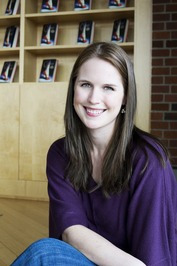
Marissa Meyer’s 2008 NaNo novel, Cinder, debuted on the New York Times bestseller list. Marissa lives in Tacoma, WA, with her husband and three cats. She’s a fan of most things geeky (Sailor Moon, Firefly, color-coordinating her bookshelf…) and will take any excuse to put on a costume. She may or may not be a cyborg.
September 24, 2014
In Case of Inspiration Emergency: Distort Your World

Whether you’re a planner or not, there’s one thing every writer will need as they prepare for NaNoWriMo: inspiration. We’ve challenged some of our favorite authors and the NaNo staff to inspire you by sharing what’s inspired them… and challenging you to prepare a specific jumpstart for that inevitable idea drought:
The Inspirer: Lauren Harsma, NaNoWriMo Communications Captain
The Inspiration Sources:
Pushing Daisies
Swamplandia! by Karen Russell
The Decemberists
The Jumpstart: Write a short history of your setting, and include something unexpected. Maybe your setting’s high school is a brand new one, recently built and unfamiliar to everyone in the student body. Maybe the family home your main character is reluctantly returning to was one she helped her grandfather build when she was young. Maybe the forest on the edge of town is full of silent, watchful unicorns…
Why This Will Inspire You: The most important thing I try to do when I write is create a new reality. Not necessarily anything drastic—just something strange enough that it can be immediately categorized as fiction.
My favorite example is Pushing Daisies: a television show about solving crimes, baking pies, and waking the dead. The color palate of the show is garish, the costuming ludicrous, the settings nonsensical and structurally unsound (a factory shaped like a beehive? a bakery with a pie for a roof?). Enthralling and enchanting, Pushing Daisies is an animated world gone live-action. Color appeals to me, so I study how writer-directors like Bryan Fuller and Wes Anderson use it to make their characters and settings captivating.
The characters in Pushing Daisies speak too quickly and too cleverly, with an abundance of metaphors. They taught me that dialogue is not the same as conversation, and that there doesn’t have to be a realistic lilt in the words themselves as long as they are delivered in a way that forwards the plot, engrosses the audience, and characterizes your protagonists. Pushing Daisies made me see that the most important thing about storytelling is not necessarily believability.
Another element of the development of my culture canon is the work of Karen Russell. She writes magical realism, in which familiar worlds are skewed just slightly into puzzling, eerie deformities. Swamplandia! showed me that my writing doesn’t have to fit snugly into any category, that it can be as weird and blended and dysfunctional as I want it to. My characters can wrestle alligators for a living! They can be lemon-sucking vampires! They can fall in unreasonable love with ghosts! Anything goes.
The third key component of my writing reel is the Decemberists. They have a knack for writing songs that are filled with good-wallpaper imagery that sticks to the inside of my head and never peels off.
I’ve never been on a battlefield in France or in the belly of a whale, yet Colin Meloy’s lyrics take me to those places. The music creates a palpable ambiance: sepia-toned like old photographs, tawdry like velveteen parlor shows. Their use of language – vocabulary, rhyme, inflection – is incredibly powerful. I try to emanate that in my own writing: description so hearty that it becomes a mode of transportation to a new world.
The thing is, writing to be a pair of glasses tinted in such a way that everything you see through them is distorted just enough to be uncanny. These are just a few of the hundreds of colorful, cartoonish, clever sources from which I’ve mined inspiration. How will you tint your worlds?
September 22, 2014
In Case of Inspiration Emergency: Make a List of Reasons to Spend Time With Your Character
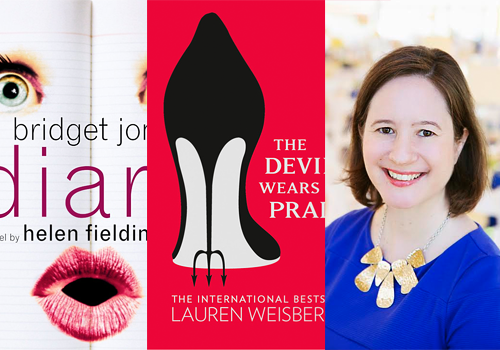
Whether you’re a planner or not, there’s one thing every writer will need as they prepare for NaNoWriMo: inspiration. We’ve challenged some of our favorite authors, and the NaNo staff to inspire you by sharing what’s inspired them… and challenging you to prepare a specific jumpstart for that inevitable idea drought:
The Inspirer: Lisa Doyle, author of Milked
The Inspiration Sources:
Bridget Jones’ Diary, by Helen Fielding
The Jumpstart: Make a short list of reasons you want to spend time with your protagonist!
Why This Will Inspire You: Like most (if not all) of you, I grew up reading everything I could get my hands on. From Archie comics to R.L. Stine books to The Baby-Sitters Club, I always had a book in hand and one in the hopper. As I got older, I graduated to the classics, and then went through a period in the ‘90s addicted to blockbuster authors like John Grisham. Then, a bestseller came out that would change my life forever: Bridget Jones’ Diary.
This was the first book I’d read that made me think, Yes! You get women! You get me!
Helen Fielding’s debut introduced a wry, self-deprecating and hilarious female perspective that hasn’t been matched to this day. The character of Bridget was so relatable, so real, and so funny—but more importantly, she was all of these things without ever trying to be. She wasn’t Mother Teresa and she wasn’t Gloria Steinem—she was only unapologetically (or sometimes awkward-apologetically) herself.
I’m of the mindset that reading a novel should make me happy, plain and simple. Everyone has different criteria for that, but Bridget Jones’ Diary helped me realize that if I ever worked up the nerve to write a full-length novel, I’d want for my readers to feel about my protagonist the way I felt about Bridget: like she was the friend I could invite over without having to vacuum beforehand. She’s the kind of friend I could have over even when I was in my pajama pants, with no make-up on, and we could just gossip and laugh for hours on end. You know the line—someone who likes you very much, just as you are.
Your readers have to want to spend time with your characters… but so do you! You’ll be spending at least a month with them, so make a list now to remind yourself why you love them. While writing Milked, I loved my protagonist Amanda because she:
Found herself thrust into a crazy world of the celebrity elite.
Still remained the girl next door
And kept a hold of her sense of humor
Why do you want to spend time with your main characters?
Lisa Doyle is a communications manager and freelance writer based in the Chicago area. A graduate of Miami University, she currently works in advocacy for homeless families at Bridge Communities. Her fiction debut, Milked, will be published by Simon & Fig in November 2014. Keep up with Lisa on Twitter and on Facebook!
September 19, 2014
NaNo Prep: Don't Waste a Single Moment
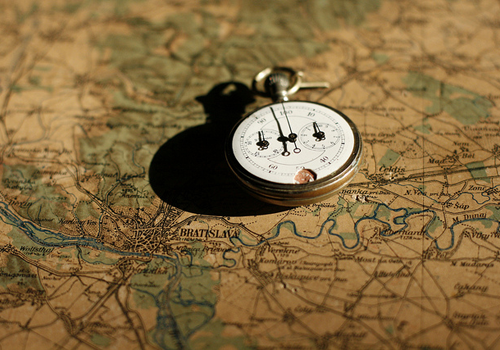
NaNo Prep is here! Whether you’re planning your November novel down to the final scene, or soaking up inspiration for spontaneous story creation, we’ve got the tools you need to make this year’s NaNoWriMo your most successful ever. Today, author Eileen Goudge shares why a writer shouldn’t look for time, but should take long baths:
I was recently reminded, reading novelist Claire Cook’s inspiring (and hilarious) book, Never Too Late, that every author has his or her own “sure-fire” method for writing. Mine is simple: I commit to writing at least a paragraph a day. Almost never do I stop at one. In fact, once I get going it can be hard to stop. Try it. It works.
When I used to teach writing the question I got asked most often was, “Where do you find the time?” Good question. Where did I find the time? When my kids were little, I envied parents who worked outside the home. They got to sit at a desk that wasn’t in the kitchen. They could talk on the phone without a child screaming in the background. I wore shirts with spit-up stains to work. My typewriter represented the four food groups, with spaghetti sauce stains to go with the crumbs in the keyboard. And have you ever tried to type with a small child on your lap?
Along the way I learned a few tricks about time management, so here goes:
Don’t look for it. Time is elusive. Unless you’re a monk living in a monastery where talking isn’t permitted, chunks of uninterrupted time in which to write are rare. I mean time when you can sit at your desk without the phone ringing or someone knocking at the door or a kid yelling, “When’s dinner?” Instead of searching for it…
Grab it where you can. Think about all the wasted minutes in an average week. Time spent in transit or standing in line. When I was a mom of young kids I was the crazy lady standing in line at the supermarket scribbling in my notebook. I always had my notebook handy.
In today’s era of hand-held electronic devices you’re even better equipped. Cooling your heels at the DMV? Waiting at the pharmacy to get a prescription filled? Get out your iPad and get cracking. John Grisham wrote The Firm commuting to work in the mornings by train.
Take long baths. I get some of my best “writing” done soaking in the tub. I’m not talking about risking a soggy notebook or ruined electronic device. I’m talking about taking the time to let your mind drift.
Ideas flow more freely in warm water, I’ve found. Book titles come to me. Solutions to pesky plot points magically present themselves. Snippets of dialogue pop into my head. Plus you have a built-in excuse for letting your calls go to voicemail.
My paragraph-a-day plan might not be for you. If it isn’t, find your own method. But one thing holds true for all writers: Time flies. You have to snag it however you can. Because it won’t come to you.
Eileen Goudge wrote her first mystery, Secret of the Mossy Cave, at the age of eleven, and went on to pen the perennially popular Garden of Lies, which was published in 22 languages around the world, and numerous other women’s fiction titles. Bones and Roses is the first book in her Cypress Bay Mysteries series. She lives in New York City with her husband, television film critic and entertainment reporter Sandy Kenyon.
Top photo by Flickr user ksyz.
Chris Baty's Blog
- Chris Baty's profile
- 63 followers



